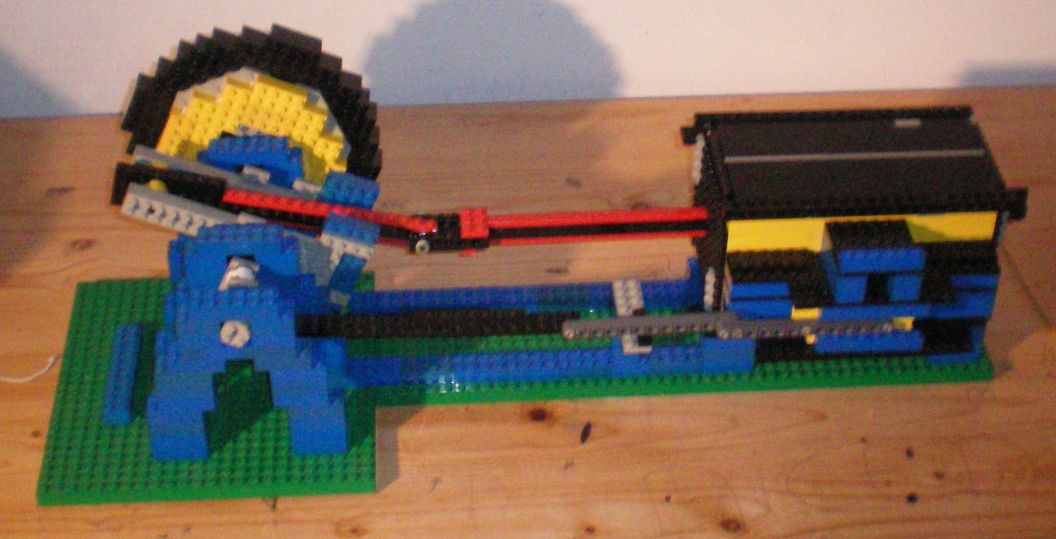Lego big low pressure engines
|
December 21, 2011. This month, I got some inspiration from a Lowlug member (Anko) . Anko has demonstrated that Lego engines that are powered by vacuum cleaners work better when they are big. Most engines that have been published have 2x2 or 4x4 pistons. Check my engines from 2007. Anko built an one-cylinder engine with a 10x10 piston. However, bigger engines also require more Lego bricks, so I started with a one-cylinder double acting engine with a 6x6 piston and a new system for the valves. I have replaced the steam shifter by a moving valve. |
 |


Some bricks have been removed to allow for a peek into the valve system,


This movie shows
how well it works. Because it is a one-cylinder engine, it needs a fly
wheel to get through the torqueless angles. The next steps are additions of a Lego governor to regulate the speed,
a reverse bar, and 1 or 2 extra cylinders.
December 26. During the christmasdays/nights , I have built a new version with a governor. The inlet and outlets had to become a little bigger to lower the resistance to the airflow.
December 28, 2011. After the disappointment about the governor, I continued experimenting, and I have built a second cylinder. It appeared to be very important to select the right bricks, new an undamaged, for the cylinder to allow for a smoothly moving piston. The first experiment was to connect the outlet from the first one to the inlet of the second one. Thie airflow for the second one ws not big enough enymore to make it run.

An engin with two cylinders connected parallel with a 90 degrees shift worked well. However, there was not an increasement of output torque.


And this movie shows it runs without torqueless angles.
January 4, 2012 This time, I have tried to built a realy big one. The challenge was to find a construction for the cylinder and the piston that does not introduce frictions. The trick was to use long beams , and thechnical beams ion the edges .

For the first engine, I tried this construction for a 10x10 piston.


The front and back of the cylinder exists of simple fitting caps that are held in place with corner tiles



The
construction works, but is not strong enough. Many improvements
are needed to make this engine run for a long time without getting
damaged. For the movie demonstration, I have used a very low airflow from the vaccumcleaner.
